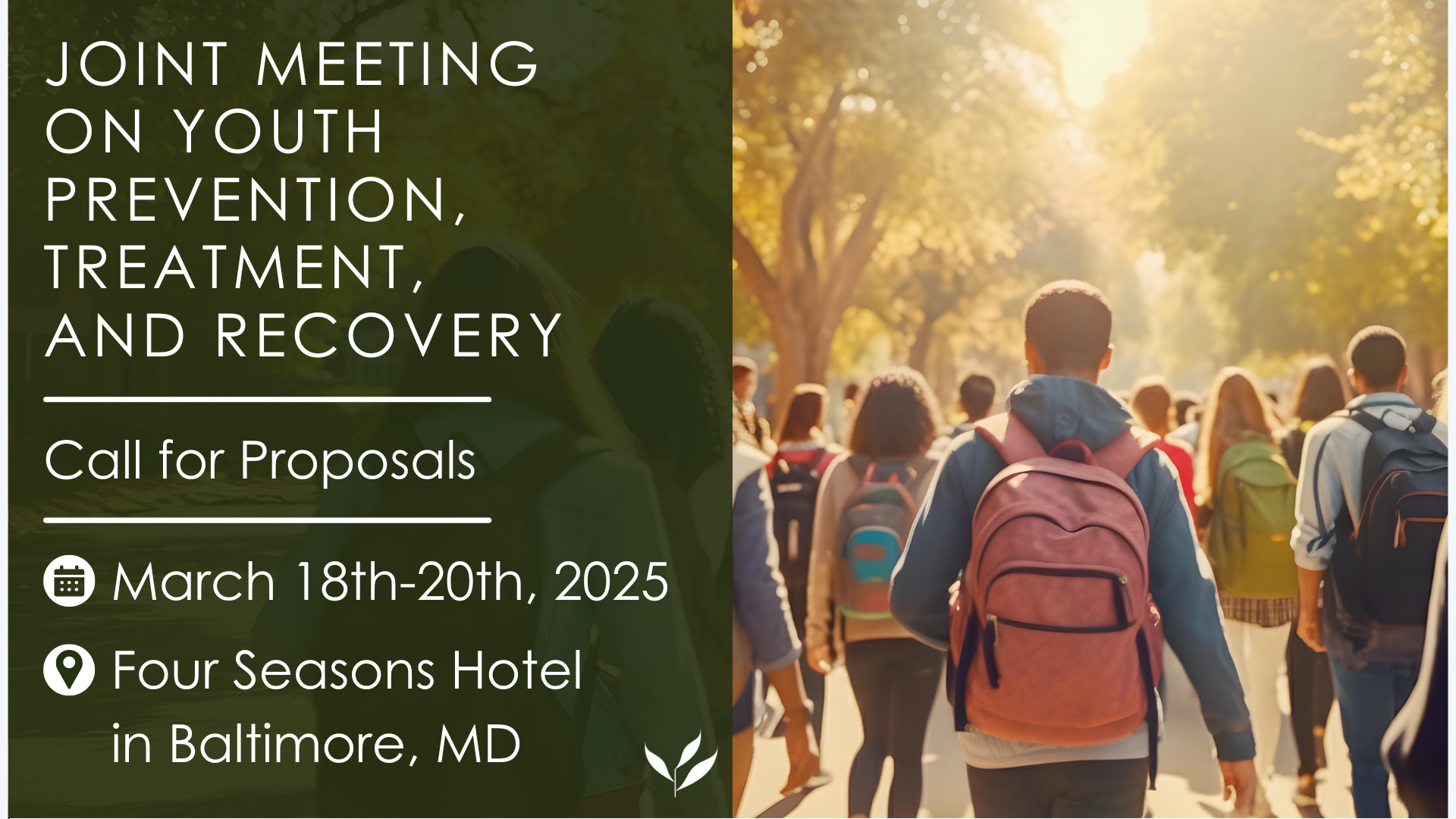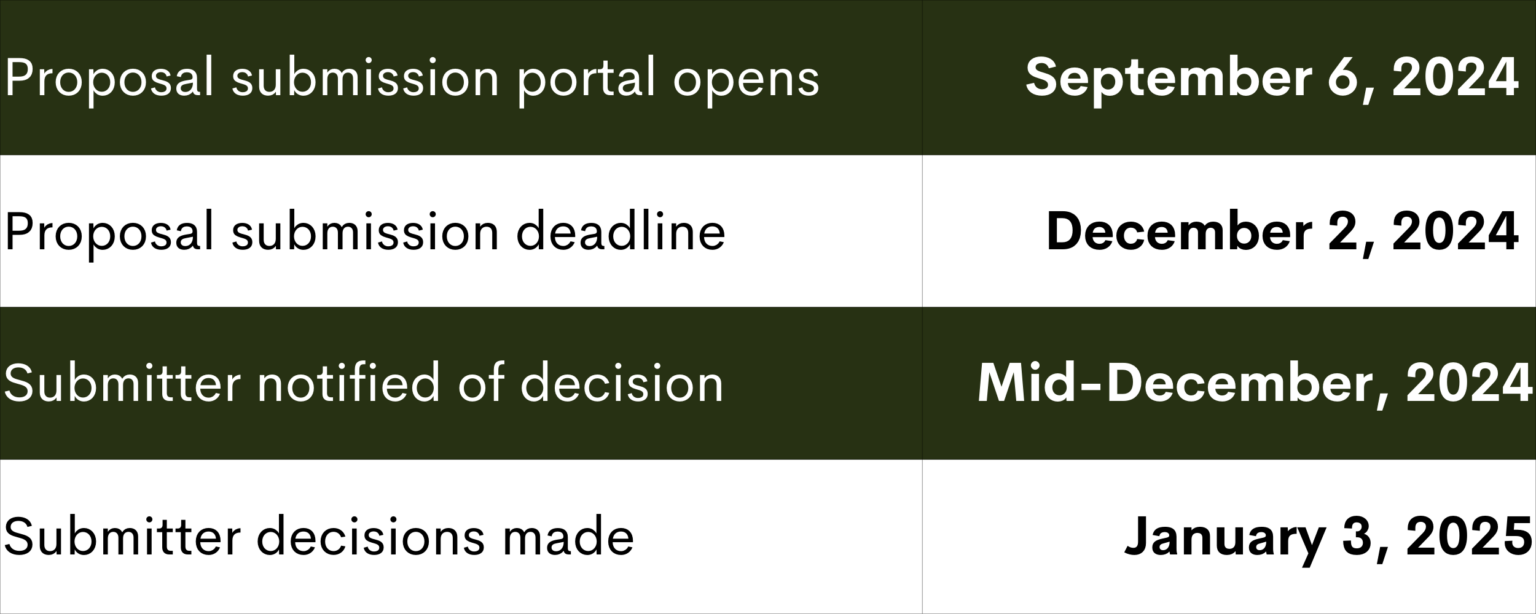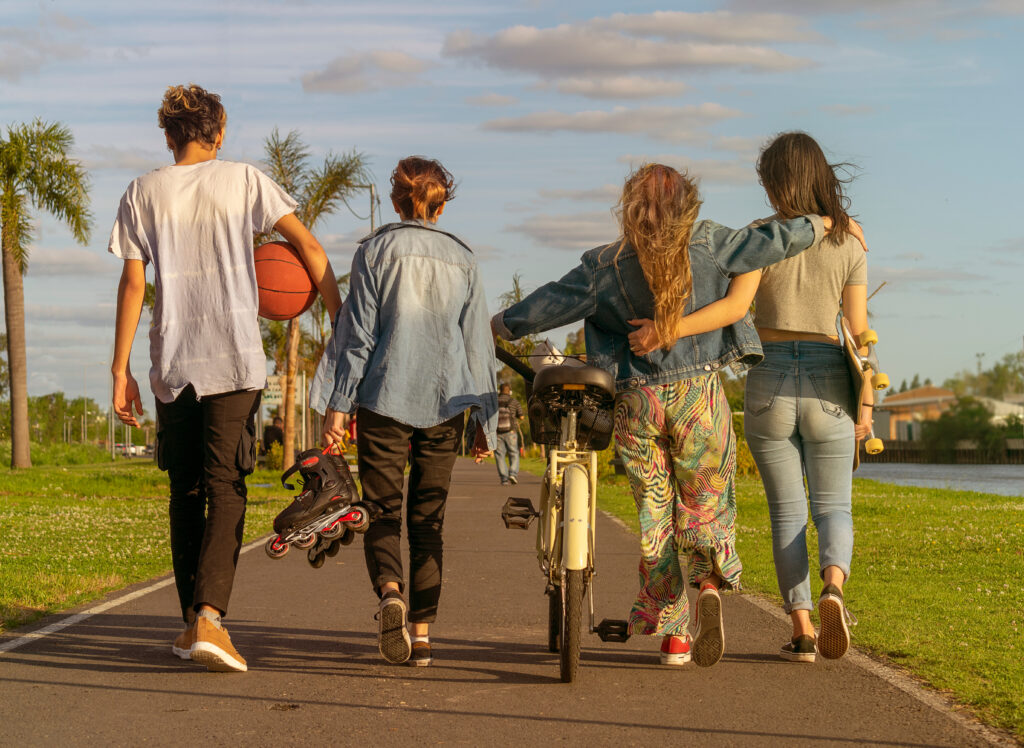
Thank you for submitting your abstracts for the 2025 Joint Meeting on Youth Prevention, Treatment, and Recovery. We appreciate your contributions, and the call for proposals is now officially closed.

The deadline for proposal submission is December 2nd, 2024. Word limit for all submissions is 400 words. All submissions will be peer-reviewed “blind”, and participants will be notified by mid-December 2024. Time and space considerations as well as program need will factor into acceptance decisions and assignment to oral or poster sessions. Authors must limit themselves to no more than two first author submissions. If individuals submit more than two proposals as first author, only two will be considered (based on date of submission). Please note that, if accepted, all presentations must be given in person.
The annual 2025 Joint Meeting on Youth Prevention, Treatment, and Recovery (JMYPTR) aims to promote and improve substance use prevention, early intervention, harm reduction, treatment, and recovery efforts among children, adolescents, and emerging adults. The conference provides a dynamic and interactive forum for the exchange of research, policy, and clinical information among researchers, practitioners, policymakers, and youth and families. By hosting this conference along with several key federal partners, we aim to closely connect research, clinical interventions, and policy at the national level.
The 2024 Joint Meeting on Youth Prevention, Treatment, and Recovery brought together researchers and clinicians from around the country in what was the first such national conference to take place in over a decade. Our inaugural Joint Meeting had 445 delegates spanning 6 countries, 31 Tribal nations, and 38 U.S. states and featured 129 presentations, showing the widespread national dedication to our mission of bringing youth back to the top of our nation’s prevention, treatment, and recovery substance use agenda. We were joined by federal partners who recognized the significance and timeliness of these efforts, such as the Substance Abuse and Mental Health Services Administration (SAMHSA), the Bureau of Indian Affairs, Office of Justice Services (BIA/OJS), and Indian Health Service (IHS).
This conference successfully reinvigorated the field following the tradition of the Joint Meeting on Adolescent Treatment Effectiveness (JMATE) which ran from 2005-2012. With a renewed focus on this area, the National Center on Youth Prevention, Treatment and Recovery (youthrecoveryanswers.org) at the Massachusetts General Hospital Recovery Research Institute in collaboration with numerous federal, state, and national organization partners, is continuing to expand this effort to address the public health imperative of tackling youth alcohol and other drug use.
The Bureau of Indian Affairs, Office of Justice Services’ Behavioral Health support for Native communities is to assist in developing service and data infrastructures that plan for and implement best practice strategies to reduce recidivism and related health consequences. This year, the annual PWRRI Forum will be fully integrated into the prevention, treatment, and recovery tracks of the JMYPTR conference and will provide avenues of culturally responsive information to share among all conference participants interested in improving the wellbeing of Native communities and beyond. These offerings will include working “promising practice” models that Tribes are implementing in their communities that address special situation and contextual circumstances of Indian youth and their families. These culture-infused innovative practices reach deeply into the process of healing and demonstrate how culture, alongside clinical practices, are what are considered by Indian Country, to be the most effective approach to effect long-term change in all areas of substance use prevention, early intervention, harm reduction, treatment, and recovery.

The current alcohol and drug crisis in our nation is unprecedented – we need collaborative urgency, action, and innovation to address it. There is an increased recognition of the need to prevent the onset of substance use disorders, intervene earlier in the clinical course, provide access to harm reduction services, as well as more generally attract and engage young people much sooner into services that can help initiate, support, and maintain remission and stable recovery. The 2025 JMYPTR will serve as a platform for all stakeholders to gather, learn, and share information about evidence-based and innovative practices and research as well as foster new collaborations.
The current era of change spans many fields and cuts across multiple levels:
The 2025 JMYPTR features three tracks
Presentations are organized according to these general tracks. JMYPTR proposals should focus on children, adolescent, emerging adult, and young adult populations. See definitions on final page for more information.
This track seeks presentations focused on prevention and early interventions that aim to prevent and reduce overall harm immediately during the young person’s adolescent and emerging adult years as well as preventing lifelong problems. Suitable topics could include:

There is a pressing need to identify novel treatments and practices that have been developed specifically for youth, and for these to have been developed with their and their family’s input. This track seeks proposals of novel treatments and practices for which there may be theoretical support, pilot data or early trial evidence of a positive effect on young people. Studies of existing treatments which seek to limit disparities among minority populations by adapting approaches to specific populations will be appropriate for this track. Small sample studies or qualitative studies that have a strong theoretical rationale will also be appropriate for this concentration. Other topics to be addressed within this track include but are not limited to the following:

The field has moved to valuing recovery-oriented systems of care, that is, a transformational shift in how we approach youth substance use prevention, treatment and recovery. From this perspective, there should be “no wrong door to treatment” and no single pathway to recovery. A comprehensive infrastructure supporting both treatment and recovery must be developed. This concentration will focus on how the different and multiple youth- and family-serving systems can support youth through (1) evidence-based interventions, treatments, and practices, (2) education-based prevention and recovery supports, and (3) community-based recovery supports.
This track will also focus on different aspects of the larger continuum of care as well as proposals that examine infrastructure elements such as collaboration, integration, and supportive organization and financing arrangements across multiple systems that serve youth and their families. Topics to be addressed within this concentration include but are not limited to the following:
Recognizing that not all youth substance use submission topics fit neatly into one of these tracks, other presentation topics welcomed at the conference are included below. When deciding which track to submit, please classify your proposal as you see fit. Some of these topics include, but are not limited to, the following:
Below is a description of the session types and presentation categories featured in JMYPTR. Each submission should fall under one session type, and we are looking for presentations that fall under at least one of the following categories.
All submissions will be reviewed by at least 2 peer reviewers before a final decision is made. Submissions will be reviewed based on the following criteria:

Note: The conference adheres to the International Society of Addiction Journal Editors consensus statement which recommends against the use of terminology that can stigmatize people who use alcohol, drugs, other addictive substances or who have an addictive behavior (isaje.net/addiction-terminology.html). Please also see the Addictionary at recoveryanswers.org for guidance when developing proposals and final presentations.